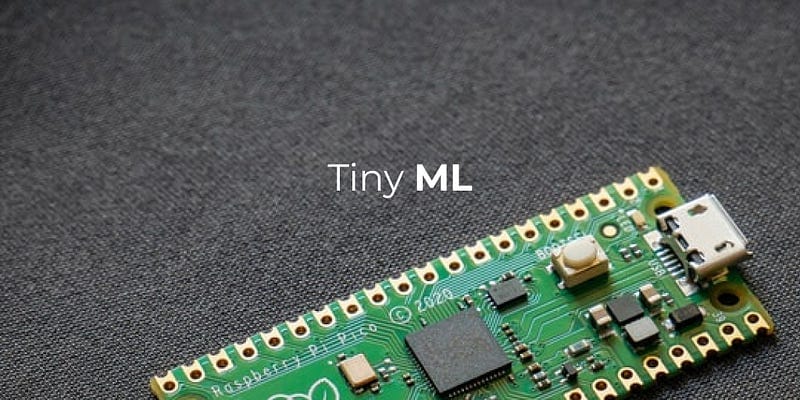TinyML and Small Data: The Future of Efficient Machine Learning
As the world of machine learning continues to evolve, new technologies and methodologies emerge to cater to different use cases and…

As the world of machine learning continues to evolve, new technologies and methodologies emerge to cater to different use cases and constraints. Among these advancements are TinyML and small data, which focus on efficiency, accessibility, and versatility. This article will provide an overview of TinyML and small data, their significance, and how they’re changing how we think about machine learning.
TinyML: Machine Learning on the Edge
TinyML, or tiny machine learning, is an emerging field that focuses on developing and deploying machine learning models on low-power and resource-constrained devices, such as microcontrollers and edge devices. These devices are often found in Internet of Things (IoT) applications, wearable devices, and other embedded systems where conventional, compute-heavy machine-learning models are unsuitable.
TinyML models are designed to be small, fast, and energy-efficient, allowing them to operate on limited hardware resources without compromising performance. This is achieved through various techniques, such as model pruning, quantization, and knowledge distillation. As a result, TinyML enables AI applications in areas where traditional machine learning was previously infeasible due to power, memory, or processing constraints.
Small Data: Extracting Value from Limited Data Sets
In contrast to big data, which focuses on leveraging massive amounts of data to create complex models, small data emphasizes the importance of using limited, curated datasets to develop machine learning models. The small data approach recognizes that, in many cases, organizations need access to vast amounts of data or the resources required to manage and process it.
Small data techniques typically involve data augmentation, transfer learning, and few-shot learning, which allow for creating effective machine learning models even when data is scarce. Small data democratises machine learning by focusing on extracting valuable insights from smaller datasets, making it more accessible to organizations and individuals with limited resources.
The Importance of TinyML and Small Data
There are several reasons why TinyML and small data are gaining prominence:
- Accessibility: By reducing the resource requirements for machine learning models in terms of computational power and data, these approaches make AI more accessible to a broader range of users and organizations.
- Privacy and Security: TinyML enables on-device processing, which helps preserve user privacy and data security by keeping sensitive information on the device instead of transmitting it to a central server for processing.
- Latency: On-device processing with TinyML reduces latency, providing faster response times for real-time applications like voice and gesture recognition.
- Energy Efficiency: TinyML models are designed to be energy-efficient, making them ideal for battery-powered devices and reducing overall energy consumption.
- Versatility: The small data approach allows for developing models tailored to specific use cases, even when data is limited or of varying quality.
Conclusion
TinyML and small data are revolutionizing how we think about machine learning, bringing AI to the edge and making it accessible to a broader range of users and devices. As these technologies mature, we expect to see even more innovative applications and use cases, unlocking ML’s full potential.
Follow me on Medium, LinkedIn, and Twitter. Let’s connect!
I am looking forward to hearing from you!
All the best,
Luis Soares
CTO | Head of Engineering | Fintech & Blockchain SME | Web3 | DeFi | Cyber Security
#machinelearning #ML #artificialintelligence #tinyML #smalldata #datascience #analytics



